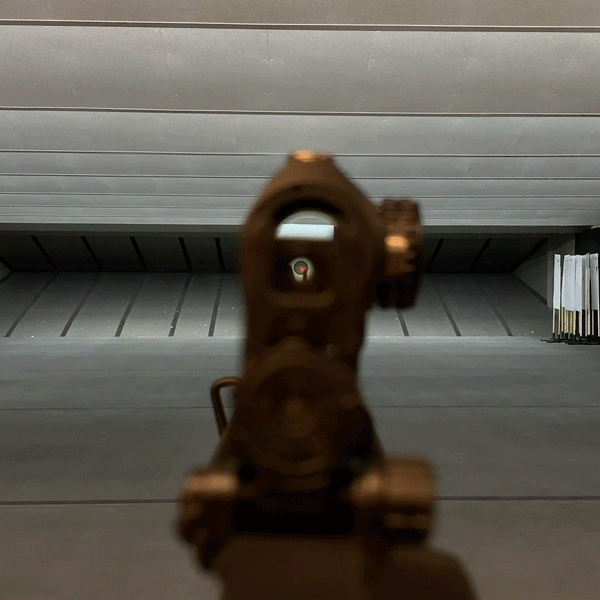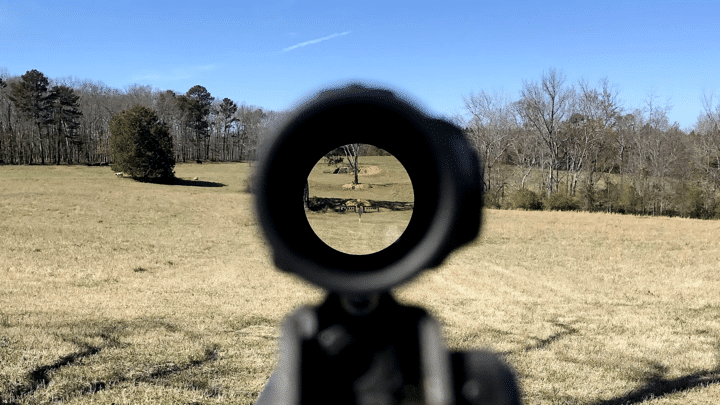Astigmatism is fairly mysterious in the shooting world.
Astigmatism describes an inconsistent surface of the ocular lens, or, more simply, a lumpy eye. The human eye has a lens like a camera or eye glasses. Our eyes are designed, obviously, to be most effective when in perfect health, however, rarely do adults have absolutely flawless vision. Astigmatism is a degenerative condition of the eye, so it also doesn’t improve without laser surgery or other innovative medical procedures.
There are a number of conditions & diseases of the eye. Human eyes naturally degrade over time, as the rest of the body does. However, those who suffer from astigmatism experience increased sensitivity to & degradation from exposure to light. This is especially an issue when driving at night. Some astigmatisms are so strong, people who suffer from them either flat-out can’t or do not feel safe driving at night, altogether.
Since an eye suffering from astigmatism has difficulty focusing light, introducing more light will only exacerbate the issue. This is especially frustrating for shooters with astigmatism, as their eyes have extreme difficulty with reflex-style red dot optics. Of the numerous types of optics, reflex-style red dots are typically the “quickest” to locate when quickly raising a firearm to aim. Therefore, even though astigmatism’s effects are less pronounced with almost every other style of optic, many affected shooters still prefer a red dot, even if distorted. A reflex-style red dot optic is “quicker” because the laser emitter is being reflected off the optic’s lens & focused directly into the ocular lens. This is also why red dot style optics are most affected by astigmatism compared to alternatives.
Shooters with astigmatism almost literally have to personally look through the window of each model of every manufacturer of red dot style optics to be sure what level of distortion the dot will suffer when perceived by their eye. Again, the actual optic displays the reticle clearly (even the $20 optics) however, the clarity of the reticle’s shape is totally due to the way your eyes personally perceive it. (To be clear, a $20 dollar optic will probably have a plastic objective plane, which will cause the reticle to be perceived as less clear, regardless of eye health.)
Each individual shooter suffering from astigmatism usually has their own personal preference of manufacturers or models of red dot style optics. Generally, more reputable brands charging a premium can typically do so because the product justifies the price. Frankly, more expensive models, from well established brands, typically have clearer glass, stronger emitters & crisper reticles than their cheaper, economical counterparts.
While, largely, a shooter with astigmatism doesn’t have much autonomy in dealing with the condition, there are some common misconceptions or oversights which complicate having astigmatism as a shooter, specifically. There actually are a couple useful techniques beyond simply learning to live with & compensate for astigmatism that a shooter could utilize to better manage it within the context of shooting.
Users may write off a particular model of optic after looking through the window once. The reticle is either bursting & distorted or it isn’t, right? Well, astigmatism affects the eye’s ability to focus light, so the reticle brightness setting actually may just be too high for the ambient lighting conditions the eye is perceiving it in. More plainly, the dot is too bright!
The more light going into an eye suffering from astigmatism, the worse the perceived distortion will ultimately be. A very simple solution for this phenomena would be to turn the reticle down until it’s not as bright, distorted & bursting. Adjusting a red dot optic to ambient lighting conditions regularly is a good habit to develop, in general. Even shooters without astigmatism should know how to & be in the habit of adjusting brightness to ambient conditions to get the very best performance out of any particular optic.
Another simple trick to help manage reticle distortion from astigmatism requires co-witnessing a set of iron sights to the red dot. Typically, rear iron sights will have some sort of aperture. Exactly like in a camera, this aperture can be utilized to restrict the amount of light being exposed to a lens. In this case, the lens is the lens of an eyeball. Correctly utilizing a rear aperture, when co-witnessing with a red dot, should sharpen up the reticle considerably. Since a shooter has to purposely obscure their vision for this trick to work, it isn’t very intuitive long-term, rather, something that can be utilized to take certain precise shots or aim at longer-ranges in brighter conditions.
The simplest thing a shooter with astigmatism can do to help manage distortion & bursting is simply ensure their prescription is up-to-date & try out different brands of tinted or polarized lenses. Some brands specialize specifically in lenses for shooters with astigmatism. This is a simple way for a shooter with astigmatism to ensure they are actively offsetting some of the negative impact astigmatism has on shooting, in general.
Short of LASIK-style corrective surgeries, this is the extent of control a shooter with astigmatism has when using a reflex-style red dot optic.
Many avoid red dots altogether, opting for prisms or LPVOs, which typically feature etched reticles. Unlike red dots, optics with etched reticles technically illuminate the etched reticle, rather than reflect the illumination directly into the eye. Another alternative are true holographic sights, as they operate much differently from common reflex-style red dots, as well, & also aren’t impacted as much by astigmatism.
Ultimately, a shooter with astigmatism is burdened with managing the condition, indefinitely. Once identified & addressed, however, astigmatism can actually be more of a nuisance than a hindrance to the average shooter.






